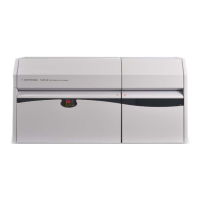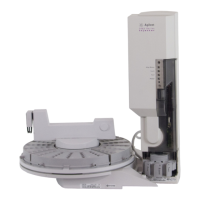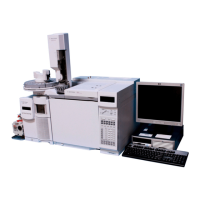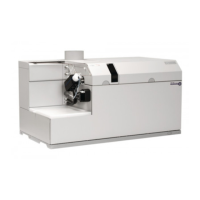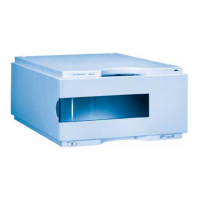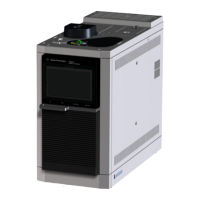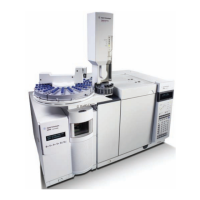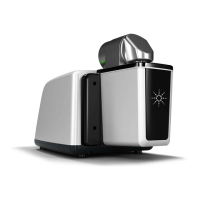Safety Practices and Hazards
Agilent 240/280 Series AA (including Zeeman) 23
When using an organic solvent, a reduced uptake rate should be used to
restrict the amount of liquid fuel that is fed to the flame.
2 The width of the burner slot must not exceed the maximum design
specification [Mark VIA: 0.47 mm (0.0185 in) for N
2
O; Mark 7 0.46 mm (0.0181
in) for N
2
O; or 0.54 mm (0.021 in) for air]. Even a small increase in width can
greatly increase the possibility of a flashback occurring.
The burner slot must be regularly cleaned according to the instructions
included in the ‘Maintenance’ chapter of this manual.
3 Ensure that the spray chamber and liquid trap are kept clean.
If dirty solutions are being analyzed (for example, engine oils), ensure that the
spray chamber, liquid trap, float, and drain tube are regularly cleaned and
flushed with a suitable solvent so that sludge does not build up in the parts.
4 Ensure that the correct O-rings are used on the burner, nebulizer block and
nebulizer, and that they remain undamaged.
Damage to O-rings in the spray chamber can result in the leakage of gas that
can be ignited by the flame and in turn set fire to the spray chamber.
Damage to O-rings in the nebulizer can allow leakage of the oxidant that can
reduce the total flow of gas through the burner slot and so increase the
possibility of a flashback occurring. Any cracked or deformed O-rings must be
replaced immediately.
5 The liquid trap must be filled with the same solution as the matrix used for the
standards and samples.
6 The drain tube must be attached to the lower nipple of the liquid trap. The
tubing must slope downwards all the way to the drain vessel so that the waste
liquid drains smoothly.
The end of the drain tube must not be allowed to drop below the level of the
liquid in the vessel. (Conversely, the level of liquid must not be allowed to rise
sufficiently to cover the end of the tube.)
When using organic or toxic liquids in the spray chamber, a vent tube must be
attached to the upper vent nipple of the liquid trap. It must slope downwards
(running parallel to the drain tube) to prevent it becoming blocked should any
liquid drain out, and be vented to an active exhaust system.
All the above points must be observed because a sudden surge of waste liquid
can affect the pressure in the spray chamber and result in a flashback.
7 Since N
2
O is stored in the cylinder under pressure as a liquid, when it expands
through the regulator it can cool the regulator sufficiently to form ice on the
outside and prevent it from operating correctly.
Prevent freezing by using a heater on the N
2
O regulator on the supply cylinder.
Contact the supplier of the regulator for a suitable heater.
